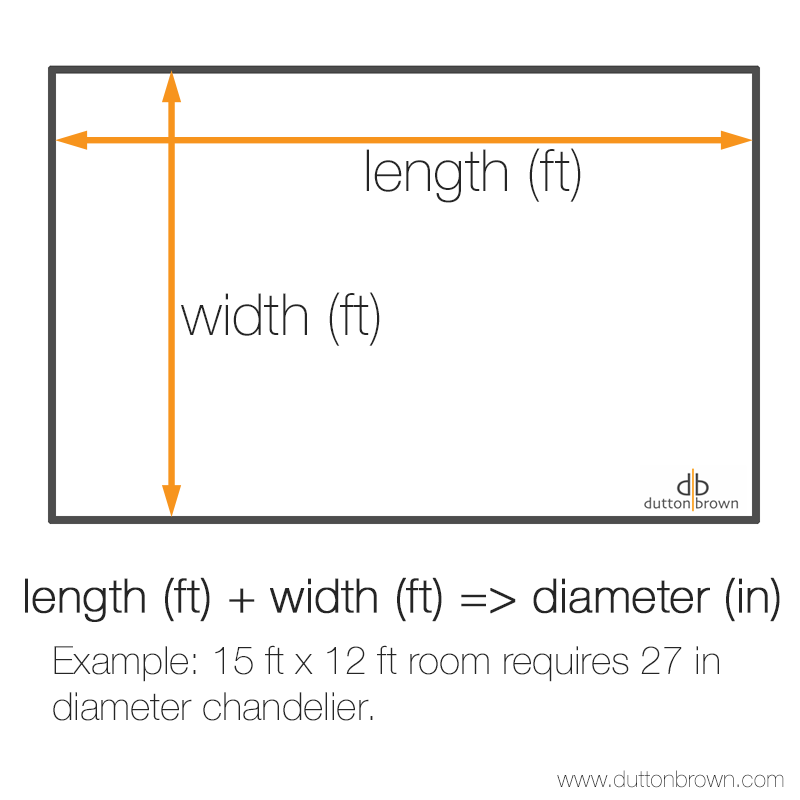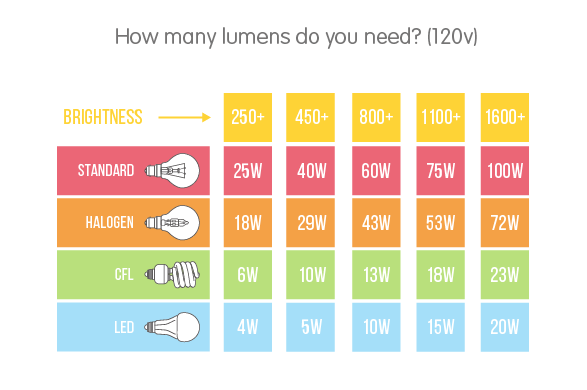There are a few rules you can use to shopping for a chandelier to ensure you're purchasing the best size for your space. Read below also to determine what the best hanging height for your fixture should be.
Chandelier Diameter/Width
To approximate the diameter or maximum width of your fixture, add the length and width of your room in feet. Change the unit to inches on the sum you obtain to approximate the fixture size. For example, if you have a dining room that is 13'x14', then you'll need an approximately 27" fixture. If you have a longer, rectangular room, you may consider then shopping for a longer, horizontal fixture in the same shape of the room.
If you're hanging above a table, it is may be more important to size the fixture relative to the table instead of the room. Convention says the fixture should be 1/2 to 2/3 the narrowest dimension of the table to keep it in proportion and also to keep the fixture out of your head space. Similarly, if you have a longer, rectangular table, consider a similarly shaped chandelier to run the length of the table. Leave 12" on both ends between the end of the fixture and the end of the table or island as well.

Chandelier Hanging Height
Measuring your ceiling height and determining where the bottom of your chandelier should hang can save time during install. For rooms where people walk under the fixture, it should be at least 7' above the floor. Above dining tables, the chandelier should hang 30-34" above the table in an 8' room. Add 3" to that range for each additional foot of ceiling height. Above a bed, the fixture should be placed such that the bottom of the fixture clears your head by about 6" when you kneel on the bed.
When shopping for a chandelier, be sure you know what the overall fixture height is. If you have low ceilings, just be sure the fixture isn't too large when installed at its minimum height. If you have tall ceilings, you may need additional rods or chain. Keep in mind you may even need to have an electrician splice on wire if the cord isn't long enough.
- Thomas Brown



Leave a comment
All comments are moderated before being published.
This site is protected by hCaptcha and the hCaptcha Privacy Policy and Terms of Service apply.